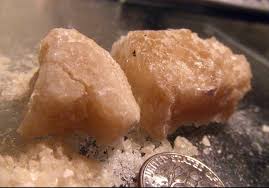Uncategorized
The Comprehensive Guide to Crystal MDMA: How to Take It Safely, Understanding Molly, and Unveiling Ecstasy
MDMA, also known as crystal MDMA, molly, or ecstasy, is a substance renowned for its euphoric and empathogenic effects. Whether you’re a seasoned user or new to the experience, understanding how to safely consume crystal MDMA and knowing the differences between molly and ecstasy is crucial. This comprehensive guide will cover everything you need to know about taking MDMA crystals, the characteristics of molly, and what ecstasy entails. By the end of this post, you’ll have a thorough understanding of how to approach MDMA use responsibly.
What is MDMA?
MDMA (3,4-methylenedioxy-methamphetamine) is a synthetic drug that alters mood and perception. It is chemically similar to both stimulants and hallucinogens, producing feelings of increased energy, pleasure, emotional warmth, and distorted sensory and time perception. MDMA’s effects have made it a popular choice at parties, raves, and music festivals.

Crystal MDMA: An Overview
Crystal MDMA is a pure form of MDMA that appears as clear, crystalline chunks or powder. Compared to ecstasy pills, which may contain various additives, crystal MDMA is typically more potent and offers a more predictable experience. However, this purity also means that users must exercise caution with dosing and sourcing.
How to Take Crystal MDMA
- Dosage and MeasurementPrecise dosing is essential when consuming crystal MDMA due to its high potency. Use a milligram scale to weigh your dose accurately. For beginners, a starting dose of 75-100 mg is advisable. More experienced users may consume up to 120-150 mg, but it’s always safer to start low and assess your tolerance.
- Administration Methods
- Oral Consumption: Dissolve the MDMA crystals in water or juice and drink it. This method is simple and allows for easy dosing. Ensure the mixture is well-stirred to distribute the MDMA evenly.
- Capsules: Place the weighed crystals into empty capsules, which can then be swallowed. This method helps mask the taste and provides a precise dosage.
- Sublingual Administration: Place the crystals under your tongue and allow them to dissolve. This method can lead to a faster onset of effects but may be uncomfortable due to the taste and texture of the crystals.
- Snorting: While less common, some users snort MDMA crystals. This method leads to a quicker onset of effects but can be harsh on the nasal passages and is generally not recommended due to the potential for irritation and damage.
- Timing and SettingMDMA effects usually begin within 30 to 60 minutes of consumption, peaking around 1.5 to 3 hours, and lasting for about 3 to 6 hours in total. Plan your activities to ensure you’re in a safe, comfortable environment with trusted friends. Hydrate regularly, but avoid overhydration, and take breaks from dancing or other physical activities to prevent overheating.
- Safety Considerations
- Test for Purity: Use reagent testing kits to verify the purity of your MDMA crystals and check for harmful adulterants. Testing reduces the risk of consuming contaminated substances.
- Avoid Mixing Substances: Combining MDMA with other drugs or alcohol can increase the risk of adverse effects. It’s best to use MDMA on its own to ensure a safer experience.
- Hydration: Drink water regularly but in moderation. A good guideline is around 500 ml to 1 liter per hour of activity.
Molly: Understanding the Drug
“Molly” is a term commonly used to refer to MDMA in its pure crystalline or powdered form. The name “molly” is derived from “molecular,” implying a purer version of MDMA compared to ecstasy pills. Molly is favored for its perceived purity and consistency, which reduces the risks associated with adulterated substances.

Characteristics of Molly
- Purity: Molly is often touted as being purer than ecstasy pills, though this is not always guaranteed. It’s essential to test any substance you intend to consume.
- Form: Molly is usually found as a white or off-white powder or crystalline substance. It can be consumed in various ways, including orally, sublingually, or through insufflation (snorting).
- Effects: The effects of molly are similar to those of MDMA in other forms, including euphoria, increased energy, empathy, and enhanced sensory perception.
Ecstasy: What You Need to Know
“Ecstasy” typically refers to MDMA in pill or tablet form. These pills often contain additional substances or adulterants, which can affect the purity and potency of the MDMA.
What Does Ecstasy Do?
Ecstasy pills produce effects similar to those of pure MDMA, including euphoria, increased sociability, and heightened sensory experiences. However, the presence of other substances can lead to unpredictable effects and increased health risks.
Comparing Ecstasy and Molly
- Purity:
- Ecstasy: Ecstasy pills may contain various additives, including caffeine, amphetamines, or other psychoactive substances. This can lead to inconsistent effects and higher health risks.
- Molly: Molly is generally considered to be purer than ecstasy pills, though testing is still necessary to confirm the absence of adulterants.
- Form:
- Ecstasy: Typically found in pill or tablet form, often with logos or designs imprinted on them.
- Molly: Usually a crystalline powder or crystals, sometimes encapsulated in gel caps for easier consumption.
- Effects:
- Both ecstasy and molly produce similar effects due to their MDMA content. However, the presence of other substances in ecstasy pills can lead to a more unpredictable experience.
Risks and Harm Reduction
MDMA, whether in crystal, pill, or powder form, carries inherent risks. Here are some essential harm reduction tips to consider:
- Know Your Source: Obtain MDMA from a reliable and trusted source. Using testing kits to check for purity and adulterants is crucial for safety.
- Educate Yourself: Understand the effects, both positive and negative, and be aware of the potential risks associated with MDMA use. Knowledge is key to making informed decisions.
- Avoid Frequent Use: Regular use of MDMA can lead to tolerance, dependence, and potential psychological or physical health issues. Allow ample time between uses to reduce these risks and let your body recover.
- Mental Health Considerations: MDMA can affect mental health, especially in individuals with pre-existing conditions. If you have a history of mental health issues, consult a healthcare professional before using MDMA.
- Physical Health: Regular check-ups with a healthcare provider and staying informed about the potential health impacts of MDMA use can help maintain overall well-being.
- Stay Hydrated: While under the influence of MDMA, it’s important to stay hydrated, especially if you’re dancing or engaging in physical activity. Drink water regularly, but avoid excessive hydration.
- Recognize Signs of Overdose: Be aware of the symptoms of MDMA overdose, which can include high body temperature, high blood pressure, faintness, panic attacks, or loss of consciousness. If you or someone else exhibits these symptoms, seek medical help immediately.

Conclusion
Taking crystal MDMA, or any form of MDMA, can provide a profound and enjoyable experience when done responsibly. Understanding how to dose and administer MDMA crystals correctly, distinguishing between molly and ecstasy, and adhering to harm reduction practices are essential for ensuring a safe experience.
Remember, informed use is key. By following the guidelines and tips outlined in this post, you can make more educated decisions about MDMA use, enhancing both your safety and enjoyment. Always prioritize your health and well-being, and approach MDMA with respect and caution.
Stay safe, stay informed, and enjoy responsibly.
Feel free to adjust any section of this post to better fit your blog’s style or your audience’s needs.
